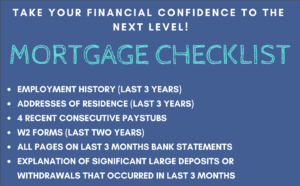Fast Travel Links
Do I Need a 20% Down Payment to Purchase a House?
Saving for a home can sometimes feel like chasing a moving target. This can be very frustrating as you are trying to achieve one of your family’s important life goals. Most people think that saving 20% for their down payment is the only logical way to gain access to their first home, but actually, there are numerous ways and options available to them. One that I have used personally, has ultimately saved my family over $100,000 and made purchasing our starter home and then our family home a reality is primary mortgage insurance.
Rather than waiting multiple years to save up the full 20% down payment I will share with you the reasons why I think accepting a mortgage with primary mortgage insurance is a valuable option that may save you multiple thousands of dollars in the long-run. Primary mortgage insurance is meant to protect lenders from the uncertainty that you may not adhere to your mortgage obligation, but I feel it offers far greater benefits to, you, the borrower, to protect yourself against the uncertainty of higher interest rates and increasing home prices. Below you will see how these variables can increase the cost dramatically, how long you may need to pay primary mortgage insurance, and what I feel really matters in making the decision to purchase your home.
What is Primary Mortgage Insurance?
The purpose of primary mortgage insurance is to protect the lending company from the possibility that you walk away from the mortgage liability before paying it off fully. This is a higher risk when you have less than a 20% down payment, which is why it’s typically required insurance on most mortgages where you do not meet that 20% requirement.
It is possible that you may have heard that some lenders don’t require primary mortgage insurance, but oftentimes the lender chooses to bury the cost of that insurance directly into your interest rate, which means it is very likely that this interest rate will be higher than a normal interest rate from another lender that requires you to pay primary mortgage insurance. This type of mortgage may be okay if you plan on living in the home only a few years, but if you were planning to stay there a substantially longer period of time then primary mortgage insurance may be more beneficial to pay yourself because there are a few options where you can have it removed from the mortgage in the future. I will hit on this more thoroughly towards the end of this strategy guide.
FHA Loans have their own insurance, which does not fall under the scope of this guide.
Two Important Variables:
Interest Rates
Interest rates have steadily crept up in the last three years. This is due to the Federal Reserve increasing rates which were previously at historic lows. Although no one knows for sure where interest rates will be next year or even a few years from now, most believe that interest rates will continue to rise as the economy continues to show strength.
Do you know how much of a difference a 1% rate increase on your mortgage would impact your monthly mortgage payment?
Here is an example illustrating that hypothetical scenario:
- 2018: Purchase Price $400,000, Down Payment $80,000, Interest Rate 4.25%, Payment $1,574
- 2019: Interest Rate Increases to 5.25% (Hypothetical, for illustrative purposes only), New Payment $1,767
Potential Cost of 1% Interest Increase is $193/ month x 360 months =$69,480
You can see that a 1% rate increase plays a dramatic role in increasing your total mortgage costs over its lifetime. If you compare this cost to the total maximum cost that you would pay in primary mortgage insurance it is very apparent that this may be worth protecting against, depending on your overall financial situation and your future goals.
Home Prices
Home prices too have been on the rise across the country. In some areas, values continue to increase at 10% or greater than the previous year’s value. Take the average home price in Fort Collins, CO a $400,000 home in 2018 and if this price increases by 10% then in 2019 that same home would cost $440,000 to purchase. That additional $40,000 is the premium to wait on purchasing the home which impacts a mortgage scenario in a few ways:
Your 20% down payment increases from $80,000 to $88,000.Also, you still need to receive a mortgage and a majority of that additional $40,000 ($32,000) cost will be included in your mortgage, which means that you are paying an even greater amount than the $40,000 and that is if interest rates stay the same. We already reviewed the impacts of changes in interest rates if they were to increase.
Having to wait one year is not so bad, but how many young professionals can navigate all of the complexities of their financial life and save $88,000 in one year? Not many. What is the impact of waiting four years using the same growth rate in home prices? Now the purchase price would be $585,640 and a 20% down payment would be $117,128. See how frustrating tackling a moving target can be?
What If These Variables Change for the Better?
Keep in mind, however, that either of these variables could change favorably. Let us assume the worst case scenario you purchased a home that you love using primary mortgage insurance, but interest rates have actually fallen, and the home price has fallen. Sure, you want to kick something, but there is no way you could have seen this coming and no one could have. You still have your home, right? You still can afford your payments, yes? Also, if interest rates go down, nothing is stopping you from refinancing at a more favorable rate if the breakeven of the closing costs on the new refinance makes sense.
How Long Do You Need to Pay Primary Mortgage Insurance?
Automatic Cancellation
Once your loan to value (Principal Balance/Original Home Value ) drops to 78% or below your lender will cancel the primary mortgage insurance, and thus reduce your monthly mortgage payment by the primary mortgage insurance monthly premium. The critical point to remember for this method of removal is “Original Home Value”, this automatic cancellation will not occur if your home has appreciated or you have made improvements to your home to increase its value.
Maybe Sooner?
If you do not qualify for the 78% calculation of the “Original Home Value”, there is another method to have PMI removed earlier than waiting for it to reach that point. I will use my most current home as an example: Just by making normal payments we would have reached the 78% of original home value after five years of payments. However, with home values appreciating in Fort Collins, CO, we were able to have it removed after two years of payments. We had to wait two years because our lender required that there be a waiting period to remove PMI when it crosses 78% loan to value at a new appraised value. We also had to pay $155 to request the appraisal.
Refinance
Requesting primary insurance amount to be removed is going to usually be the most convenient way to have this insurance removed after your home has appreciated, but if interest rates end up being lower, than it may make a big difference to completely refinance the loan at a lower rate saving interest and removing primary mortgage insurance in the process.
Focus On What Matters
Monthly Payment
There is a big difference in what a lender says you can afford monthly and what ultimately is a good decision for you and your family. I encourage you to stay within 28% of your gross monthly income to ensure that you are able to still live a balanced life and save for the future, as well.
(See: Mortgage Checklist to find out the most common documentation needed to apply for a mortgage)
The Right Home
Buying a home just to be a homeowner can be a crucial mistake. (See: Should I Buy a House Strategy Guide) It can cause you to jump into an obligation that does not feel right and give you buyers remorse. Purchasing your home should be thought of as a long-term commitment. Sure, you can always move in the future, but that is all very dependent on current market conditions. You preferably would want the value to have appreciated, at least enough to cover commissions and other costs associated with selling a home, but you also want to have buyers willing to buy your home in a timely manner.
What makes the home right for you is very personal, but a few things to consider are:
- Location, Location, Location
- Impacts commute
- School zones
- Neighborhood amenities
- Crime rate
- Condition of home
- Does it have a layout you like?
- Does it require a lot of work? (may help reduce cost, but if you are not handy, you may ultimately end up paying for repairs along the way)
Conclusion
At the end of the day, a home is a big investment and one not to be rushed into because you are fearful of a few of the variables we discussed. If you do find yourself ready to purchase a home and it ticks off all the right boxes, but you don’t have the 20% down payments, hopefully, you feel more comfortable with the idea of leveraging primary mortgage insurance to help you make your dream a reality. I feel very confident that primary mortgage insurance is a great tool to help protect you against rising home values and increasing interest rates at a reasonable cost. Be sure to read all of the fine print and know your options for having it removed in the future since it varies based on the mortgage product you choose.
As always, my goal is to help you and my clients increase their financial confidence by making better-informed decisions and avoiding costly mistakes. You can always schedule a complimentary consultation to see how a home purchase impacts your overall financial plan.

